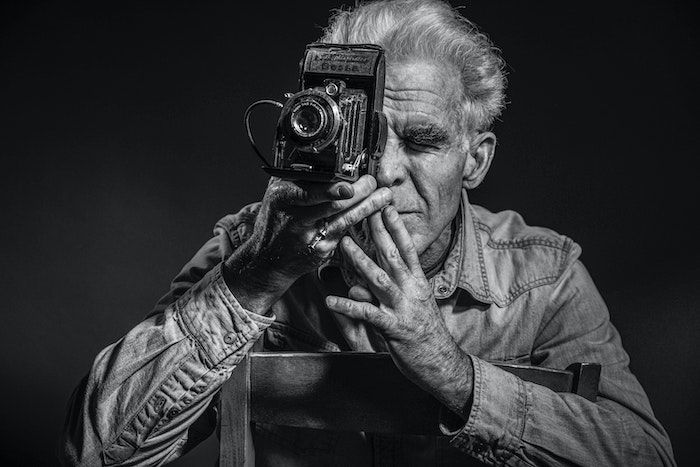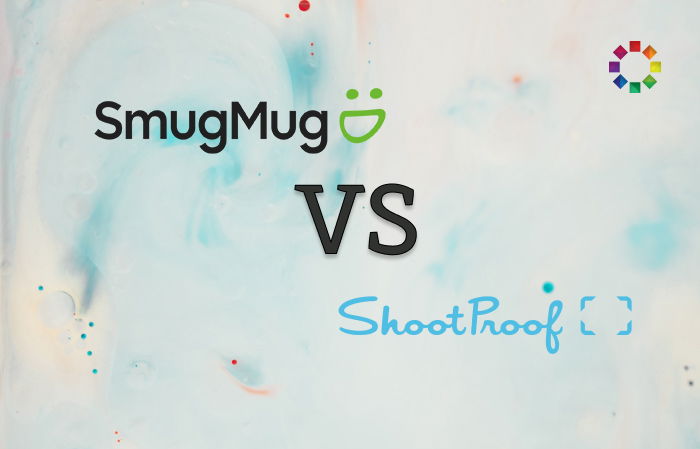Marketing has to be a top priority for any professional photographer. That might sound daunting and a little too corporate for photographers who’d rather stick to taking pictures. But you can’t ignore the marketing aspect of your photography business if you want to succeed.
Expert Photography is here to help you hone your marketing strategy. And while that might sound like boardroom speak, all our tips are down to earth and easy for any photographer to follow. Let’s get started so we can take your photography business to the next level.

Marketing for Photographers is one important part of running a photography business. The idea is to build a strategy to increase your profile in the industry, generate clients, and sell your work and services.
Making a living from photography isn’t easy, and it’s becoming harder all the time. But even a small amount of business marketing knowledge can go a long way.
Building a professional-standard website has never been easier or more affordable. And you have social media to help boost your online profile and make your work more visible. You can also send your work to magazines to help get more eyes on your work.
In the following sections, we’ll discuss each aspect of marketing for photography in depth. Remember to click the links in each section for more information.
Becoming a famous photographer takes hard work and dedication. Constantly practice your craft to improve your technical skills and develop your unique style. Keep learning about the latest photography technology and techniques.
Treat your photography like a business. Develop your communication and marketing skills to connect with potential clients. Putting your work in front of the right people is key to getting noticed.
Most importantly, never give up on your dream. It can take years to make a full-time income from photography. Stay focused on your goals and keep working to become a famous photographer, even when times are tough.
To get your photography noticed, make sure your images are high-quality and visually interesting. Experiment with creative photo projects and share them on popular photography websites to showcase your skills. Running a photography blog is a great way to build your online presence and attract more viewers to your work.
Entering photography contests can help you gain recognition for your talent. Look for competitions that fit your specialty, and always read the terms carefully before submitting.
Getting your photos published in magazines or local newspapers is another effective way to attract clients and establish yourself as a professional photographer.
Joining photography forums and social networks like Facebook, Instagram, Twitter, and LinkedIn can help you reach a wide audience. Photo-sharing platforms such as Flickr, 500px, and Behance are also excellent for showcasing your work and networking with other photographers.
By consistently sharing high-quality photographs across multiple channels, you can significantly boost your exposure and get your photography noticed.

Knowing how to get clients is essential for a successful photography business. Identify your ideal client and research their media consumption habits. Focus your marketing efforts on the most relevant platforms to save time and money.
Launch targeted social media campaigns and consider hosting an open photo shoot to attract potential clients. Maintain a presence with a quarterly email campaign showcasing your latest work. Offer special promotions and loyalty programs to gain new clients and retain existing ones.
Incentivize referrals and join freelancing websites to expand your reach. Volunteering to photograph events can also help broaden your network in your local community. By consistently implementing these strategies to get photography clients, you’ll be well on your way to a thriving photography business.

Getting your photos published in a magazine is a great way to gain exposure and recognition as a photographer. Many magazines accept submissions from both professional and amateur photographers.
When submitting your work, make sure the magazine fits your photography niche. Dodho Magazine, for example, looks for creative and unique photography from around the world. Outdoor Photography is perfect for wildlife, nature, and travel photographers. If you shoot stunning homes, Dwell Magazine is the best choice for real estate photographers.
Remember to follow each magazine’s submission guidelines carefully. Some may require specific themes or have limits on the number of photos you can submit.
By showcasing your best work and matching the magazine’s style, you increase your chances of being featured. Magazines looking for photo submissions provide a fantastic opportunity to get your photography seen by a wider audience.

Submitting photos to magazines can be a great way to get your work seen by a wider audience. It can also lead to paid assignments. But there are some important pros and cons to consider before submitting your work.
Getting published in a magazine gives you exposure to a large audience interested in your field. You may also get paid for your work and open up opportunities for future commissions. Aiming to get published can give you a photography goal to work towards and help focus your work.
On the downside, limited opportunities and high competition mean you may face a lot of rejection. Pay is often low, and the time and money you invest might not pay off. Getting published won’t necessarily lead to anything else. There’s also a risk that trying to please magazines will turn your passion into just another job.
If you’d like to learn more about submitting photos to magazines, we have a detailed guide that covers everything you need to know.

Photography contests are a great way to showcase your images and get feedback from professionals. Entering competitions can help you share your photos with a wider audience. You might not win money, but posting your images on the contest website has many benefits.
We’ve updated our list of the best photo contests for this year. These 20 photography competitions feature impartial judging, clear criteria, and diverse categories. They encourage creativity, originality, and technical skill.
Read the fine print for photo submission guidelines to ensure you send photos in the proper size and format. Most contests don’t accept purely AI-generated images but may allow AI edits. Always check the rules so you don’t miss out on competing for prestigious awards and prizes!
Photography contests are an excellent way to gain exposure, connect with fellow enthusiasts, and get inspired.

Photography forums are a great way to connect with other photographers and learn new skills. These online communities allow you to share tips, ask questions, and get feedback on your work.
Some of the most popular photography forums include DPReview, Photo.net, and LightStalking. These forums cover a wide range of discussion topics, including discussions on specific camera brands, editing software, and photography genres.
Whether you’re a hobbyist or a professional, participating in photography forums can help you improve your craft and build relationships with like-minded individuals. To learn more about the best photography forums, check out this in-depth guide.

When creating a photography website, it’s important to choose the right web hosting platform. Look for a company with fast performance, good security, and accessible customer support. Use a template that highlights your work and clearly conveys your photography style.
Stick to a focused theme for a cohesive look. Limit the number of images and galleries to avoid overwhelming potential clients. Show only your best work that catches visitor attention.
Keep your potential clients in mind when creating your website. Choose commercially viable images that tell a story. By following these tips, you can build a web presence that helps you get your name out there and attract your first clients. If you’d like to learn more about photography websites, check out our in-depth guide to creating a stunning online portfolio.
Writing a photographer bio for your website is an important task. It gives potential clients a glimpse into who you are and what you do. Keep the language simple and concise, avoid unnecessary details, and remember to keep it professional.
Introduce yourself in the first sentence, stating your name and the type of photography you specialize in. Let your personality shine through, but keep it professional and relevant to your work. If you have notable achievements or awards, feel free to include them, but stay humble and avoid bragging.
Including a photo of yourself can add a personal touch. Choose an image that matches your photography style and keep it professional. To learn more about creating a photographer bio, check out our in-depth guide.

Starting a photography blog is a great way to share your work and attract new clients. Set up your website using Wix or another easy website builder, and find an attractive theme that showcases your photos well.
Write blog posts that target keywords potential clients are searching for, such as “Portrait Photographer in New York.” Use those keywords in your post title, first paragraph, subheadings, and throughout the text. Share helpful information while subtly promoting your own services.
Installing useful plugins will improve your blog. SEO optimizes your site for search engines, and Google Analytics tracks visitor statistics so you can see what’s working.
With some effort, your photography blog will help you get discovered by the right clients. If you want to learn more about starting a successful photography blog, check out our full-length article.

Creating a photography portfolio is important for any photographer looking to impress potential clients. Start by setting clear goals for your portfolio and tailoring it to your target audience. Study the work of other photographers for inspiration and ideas.
Keep your photos organized and select only your best work. A concise portfolio with a variety of high-quality images is more effective than a lengthy one. Seek feedback from professionals in the photography industry to refine your selection.
Showcase your portfolio online with a professional website using platforms like Squarespace. Consider creating a printed portfolio as well for in-person meetings. If you want to learn more about creating an impressive photography portfolio, check out our in-depth article.

Email marketing is a powerful tool for photographers to connect with clients and generate more bookings. By sending regular newsletters with engaging content, you can keep your business in mind and build relationships with potential customers.
To get started, divide your email list into groups based on their interests, like weddings or family photography. Plan out the types of content you’ll send, such as special offers or educational tips.
Craft enticing subject lines that will make people want to open your emails. Personalize the emails by using the recipient’s name. Set up an automated email funnel to guide new subscribers through a series of emails that provide useful information and gentle touchpoints. Schedule your emails to be sent at times when people are most likely to open them, like 10 am or 1 pm.
By thinking through the content that will appeal to your customers, you can improve engagement and increase sales. Email marketing for photographers is a reliable way to generate more bookings and keep your clients engaged.

SEO (Search Engine Optimization) is important for photographers to drive traffic to their website and attract more clients. To improve your photography SEO, make sure your name appears in searches and your site is mobile-friendly. Research relevant keywords and use them strategically in your content.
Consider starting a blog to create content and build backlinks. Publish new content frequently to keep your site fresh. Encourage others to link to your site and share your work on social media.
Create a free Google Business listing so you appear in local search results. Use Google Analytics to track your website traffic and learn about your visitors. SEO for photographers takes sustained effort, but it’s worth it to generate more organic traffic and grow your business.

Every professional photographer needs a smart website to showcase their work and serve as a connection hub. Building a website might sound like a daunting task, especially for more tech-shy photographers. But building a professional-standard website has never been easier, and you don’t need any coding knowledge whatsoever.
The first thing to do is find the right website builder. You’ll need one that suits your style, skills, and budget. Thankfully, there are plenty of options out there, and you don’t need a massive budget to get a professional website.
Wix is the best website builder for photographers. It’s a no-code platform with drag-and-drop design tools, so you don’t need web design experience. There are thousands of design capabilities, and you can develop your own branding.
Wix uses AI features for quick website building. The templates make it easy to build a website, but you get enough creative control to make it personal. It even gives you logo design tools to help you expand your brand.
Website builders for photographers are an important tool for showcasing your work online. Wix is a well-priced option that anyone can use to create a professional photography website.
![]()
Wix Web Hosting is a great choice for photographers looking for an all-in-one solution to build and host their website. With Wix, you get unmetered bandwidth and a wide selection of plans to choose from. It’s also beginner-friendly and offers excellent 24/7 client support.
Wix hosts your website on a global CDN, allowing people to access your site from all over the world with fast load times. You also get top-notch security features like 24/7 monitoring to keep your site safe from hackers.
If you’re a freelance photographer looking for an online business base, the Wix Core plan is a good option. It gives you 50 GB of storage, basic site analytics, and eCommerce features. As your business grows, you can easily upgrade to a higher plan with more storage and advanced features. Web hosting for photographers is important, and Wix makes it simple to get started.

A photography portfolio website is a must for any photographer looking to showcase their work to potential clients or employers. We’ve compiled a list of the best photography portfolio websites, based on design, usability, and features.
These websites feature stunning and impressive work from photographers around the world. They specialize in a variety of genres, from fashion and food to travel and sports.
Browsing through these online portfolio websites is sure to provide inspiration for curating your own. To learn more about photography portfolio websites, we have an in-depth guide that covers everything you need to know.

If you’re an amateur photographer looking to showcase your work online, there are several great websites to consider. SmugMug is a popular choice that offers a high degree of customization, letting you express your unique style. The site has over 70 themes, an intuitive interface, and supports full-screen, high-resolution photo displays.
500px is another top option, providing networking features that keep you connected with other photographers. You can see what’s popular, identify trends, and even reach out to others in the industry. SlickPic is similar, offering an easy-to-use interface, full-screen viewing, and the ability to add labels to organize your photos.
For those interested in learning more about the best amateur photography websites, our article dives deeper into the top options and their features.

SmugMug is a popular website platform for photographers. It offers different plans with varying features and customization options. The Basic plan is affordable at just a few dollars per month. The Professional plan starts at $30 per month but includes more advanced features for selling prints and products.
Setting up a SmugMug site is simple with its user-friendly interface. You can add photos, select themes, and customize your site’s look without needing to code. However, the customization panels may take some getting used to.
SmugMug makes it easy to sell prints and products directly through your website. They work with four printing labs, allowing you to offer a variety of options to your clients. Setting up your price list can be a bit confusing at first, but SmugMug provides a breakdown of base prices, profit margins, and their 15% commission fee.
If you’re looking for a reliable platform to showcase your photography portfolio and sell prints, SmugMug is a great option.

ShootProof is a popular gallery-sharing and business management tool for photographers. It offers a simple and appealing interface that’s easy to navigate. The software is organized, making it easy to find what you need.
ShootProof’s main feature is the gallery proofing. It gives you flexibility in laying out your galleries, a helpful feature that other free gallery apps don’t have. You can also password-protect your galleries, add music, and limit the number of downloads per visitor.
If you don’t already have a business management system, ShootProof provides a simple solution for retail photographers like wedding and portrait shooters. It lets you invoice, send contracts, and create price sheets, discounts, and packages. To learn more about ShootProof, read the full ShootProof review.

ShootProof and SmugMug are popular online photo services for photographers. While they have some similarities, there are key differences to consider.
SmugMug comes out on top in this comparison. It has a sleek, modern interface that’s easy to use. Creating galleries is simple, with fast uploads and plenty of customization options.
Both services make it easy to sell photos with professional invoicing and payment processing. They also offer excellent customer support and social media integration. Pricing plans vary, but SmugMug provides more value at the lower tiers. For more details on the shootproof vs smugmug comparison, check out the full article.

Social media is a great place to start if you’re not ready for your own full-blown website. You can display your best work using sites like Facebook and Instagram. You can even use TikTok to display work, demo videos, or tutorials. The same goes for YouTube, which has become a popular outlet for photographers.
Even if you already have a website, it’s a good idea to use social media as well. You can use social platforms to funnel viewers to your main website, or you can do deals right on your profile.
Let’s look at some of the specific social media sites. We look at each one from a photographer’s point, helping you harness these tools for your photography business.
Creating a Facebook photography page is a great way to showcase your work and build a community of fans. To get the most out of your page, select the right category and fill in the “About” section with information about who you are and the work you do.
Choose a profile picture that represents your photography business, like a photo of you at work or your logo. Use your cover photo to catch people’s eyes and give visual information about your services.
Share your best photos regularly to keep fans engaged, but avoid posting too many similar shots. Add a “Call to Action” button to make it easy for potential clients to contact you. Finally, claim a relevant username that includes the word “photography” and create a Facebook photography page to start building your online presence.

Becoming Instagram famous in 2024 is all about using the platform as a social media diary. Share behind-the-scenes shots and creative images your audience can relate to. Make sure your username and bio are easy to find, and include your email and location.
Find other accounts in your field for reposts and targeted campaigns. Use niche hashtags with less than 250,000 posts for your photos to stand out. Be consistent with your posts, so followers know what to expect.
Schedule your posts to build engagement and reply to all comments to broaden your network. As your visibility grows, reach out to brands for photography opportunities. Keep your captions simple to hold people’s attention. Becoming Instagram famous takes time and effort, but it can lead to unexpected opportunities.

Your Instagram bio is one of the first things people see when they visit your profile. It’s important to make it interesting and informative. Here are some tips for creating a great photography bio.
Keep it short and sweet. Use just a couple of sentences or bullet points to convey the most important information. Include your location and photography style. Let people know where you’re based and what kind of photos you take.
Add a call to action. Encourage viewers to engage with your work by providing a link to your website or a specific product. Have fun with it! Use inspirational quotes or emojis that match your style. Don’t force it if there aren’t any extra elements you want to include.
A strong bio reflects your unique photographic style and helps you attract followers. By experimenting with different approaches, you can find the perfect bio for photographers that showcases who you are as a professional.

Writing great captions for Instagram can improve your posts and engage your audience. Keep your captions conversational and use present tense to make them feel relevant. Consider your audience and the purpose of your caption, whether it’s to inform, explain, or get attention.
If your photo shows a famous or important person, mention their name. You can also use a quote or lyrics in your caption, but be sure to credit the source. Most importantly, your caption should add value to the shot and not just state the obvious.
Captions that create involvement and engage the viewer are the most effective, especially on social media platforms. Posing a question or starting a conversation with your audience can get you more followers or clients. Captions for Instagram are a powerful tool to connect with your followers and grow your presence on the platform.

Hashtags are a great way to get your photos seen by more people on Instagram. Using the right hashtags can help you reach a wider audience and gain more exposure for your work.
The best photography hashtags are specific to your niche. Popular hashtags may have many posts, but that doesn’t mean they’re the best fit for you. Niche hashtags are often better because the people searching for them are more likely to be interested in your content.
When using hashtags, make sure to keep your images relevant. Use a mix of popular and niche hashtags, and add your location to help people find your business. You can also create your own hashtags to stand out and build a community around your work. By using photography hashtags strategically, you can improve your reach and engagement on Instagram.

As a photographer, you can make money on Instagram and other social media platforms by selling your photos. Set up an Instagram Shopping account to integrate your product catalog and tag products in your posts. Users can click the shopping bag icon to see product details and purchase without leaving Instagram.
Another way to sell prints is by creating posts that showcase your work and include sizes and prices in the caption. Ask followers to comment or DM you to place an order, then use PayPal for invoicing.
You can also offer unique Instagram photos as stock images for businesses to use in their marketing. Sell them individually, in themed bundles from your posts, or by linking to an eCommerce site in your bio. If you’ve gained a large following, look into sponsored posts and affiliate links to boost your income. Be transparent about any sponsored content to maintain authenticity with your audience. Making money on Instagram as a photographer is a great way to turn your visual content into an extra income stream.
